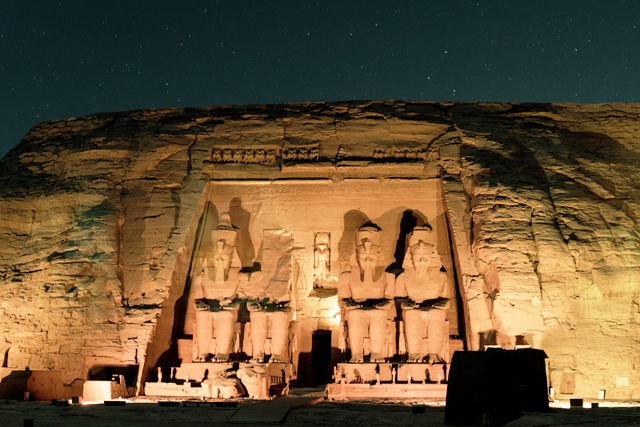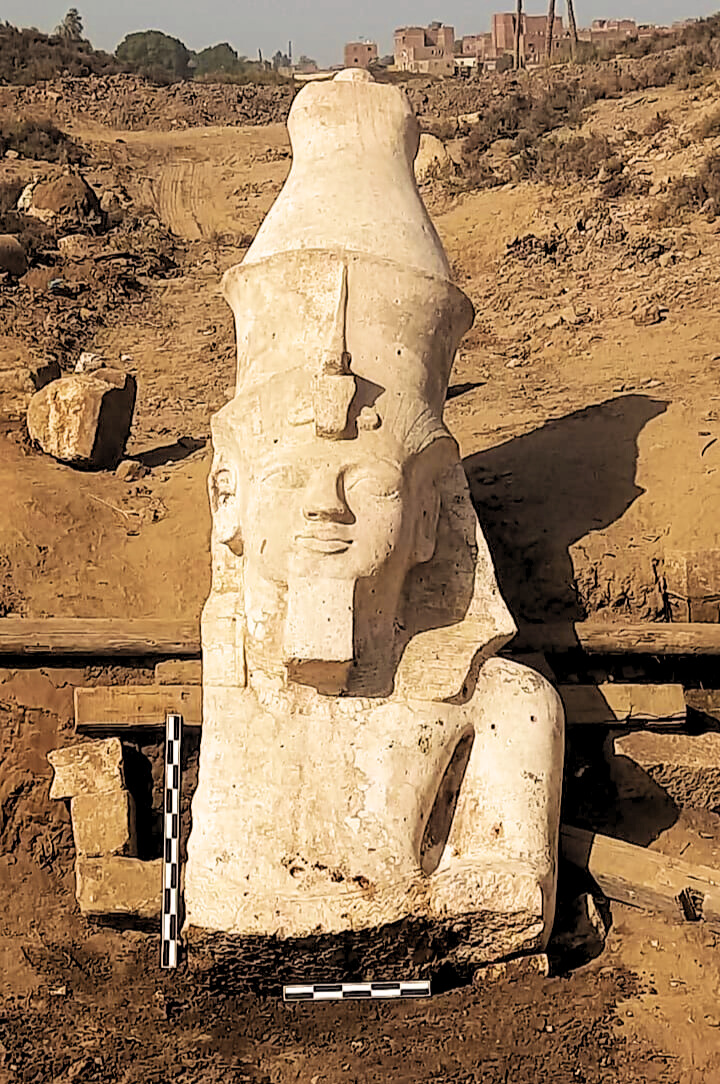March 08, 2024
In an exciting breakthrough, a collaborative Egyptian-American archaeological team has unearthed the long-lost upper part of a colossal limestone statue of King Ramses II, one of Egypt's most legendary pharaohs.
This monumental discovery, which was made at the historic site of Ashmunein in Minya, not only adds a significant chapter to our understanding of Egyptian art and royalty but also bridges a century-long gap in archaeological findings.
The journey to this discovery traces back almost a century ago when German archaeologist G. Roeder uncovered the statue's lower part during his explorations. Fast forward to the present, the recent find of the upper section, which measures an impressive 12,5 feet in height, complements this earlier discovery.
The statue splendidly depicts King Ramses II, donning a double crown atop a traditional nemes headdress, a hallmark of his regal bearing. Adding to its allure, the back of the statue is inscribed with hieroglyphs that celebrate the king's reign, offering a lens into the past reverence and artistic dedication afforded to him.

The colossal Temples of Abu Simbel dedicated to King Ramses II
The discovery sparks a beacon of hope among the archaeological team, which is keen to delve deeper into the analysis of both the upper and lower parts. Their ultimate ambition is to reunify these segments, potentially reconstructing the statue to its original towering stature of around 23 feet, a venture that would stand as a monumental testament to King Ramses II's legacy.
Beyond the statue, the team's efforts in restoring and re-erecting ancient granite columns from a 6th-century basilica serve to further illuminate the historical tapestry of Ashmunein. Once the capital of the 15th ancient Egyptian nome and a thriving center for the worship of Thoth, the god of wisdom and writing, the site's significance spanned various epochs, from the Old Kingdom through the Coptic Period.
This discovery not only enriches our understanding of Egyptian artistry and cultural heritage but also rekindles the allure of ancient Egypt for both scholars and enthusiasts worldwide. As the team continues its work, we eagerly anticipate further revelations that will emerge from the sands of Minya, each poised to offer new insights into our shared human history.

If you wish to receive more information on our new tours, events and news of our portal, please enter your e-mail address:
